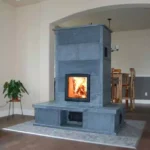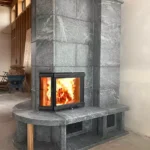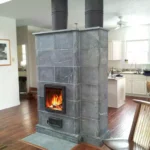THE CLIMATE VARIABLE
One way by which climate is expressed is heating degree days, which can vary significantly depending upon the geographic location. Heating degree day works as an index (or indices) designed to reflect the demand for energy needed to heat a home or business. The following is an explanation from online Wikipedia:
Heating degree day (HDD) are quantitative indices designed to reflect the demand for energy needed to heat a home or business. These indices are derived from daily temperature observations, and the heating requirements for a given structure at a specific location are considered to be directly proportional to the number of HDD at that location. A similar index, cooling degree day’ (CDD), reflects the amount of energy used to cool a home or business.
HDD are defined relative to a base temperature – the outside temperature above which a building needs no heating. The most appropriate base temperature for any particular building depends on the temperature that the building is heated to, and the nature of the building (including the heat-generating occupants and equipment within it).
For calculations relating to any particular building, HDD should be selected with the most appropriate base temperature for that building. However, for historical reasons HDD are often made available with base temperatures of 18°C (65°F), or 15.5°C (60°F) – base temperatures that are approximately appropriate for a good proportion of buildings.
The government publishes average heating degree days of the last 30 days for hundreds of cities. They can be obtained from your local building department or on the Internet (search for heating degree days). Some of these figures have to be taken in context, or the results could be surprising, as in the following examples:

*Eureka is located on the Pacific coast in northwestern California. When the inland valleys in California heat up, the coast gets foggy. When the inland valleys cool down, the fog on the coast goes away. That part of the coast really does have very cool summers!
**Flagstaff is situated in the mountains of northern Arizona at an elevation of nearly 7,000 feet. While the index results would be surprising for southern Arizona, they are in line with what could be expected in the northern part of the state.
The coldest month of the year, which is usually January, is normally taken as the basis for calculating the heat requirement. If you have a supplementary heat source for peak periods of heat usage, the January figure can be reduced.
The total heating degree days for the year are indicative of the annual fuel consumption, but not necessarily of the heater size. Even though the total per year heat consumption for Burlington, VT and Flagstaff, AZ are similar, the January indices show that the need for heat in Flagstaff is about three-quarters of what is needed in Burlington. As a result, a larger heater would be needed in Burlington than in Flagstaff.
The heating degree day figure is not the only consideration in determining whether a larger heater is necessary in a colder climate. Building codes in areas with colder climates have stricter insulation requirements. If you are building a new home, ask your contractor or building what the heating and insulation requirements are in your area for any given building type.
If you are considering installing a masonry heater in an existing home, be aware that in the long run more insulation and low-e glass are cheaper than more heat. Also, if you live in higher elevations make sure your low-e glass is produced in that higher elevation as the low-e factor does not tolerate shipping to a higher elevation. In addition, consider tightening up or replacing all doors and windows.




